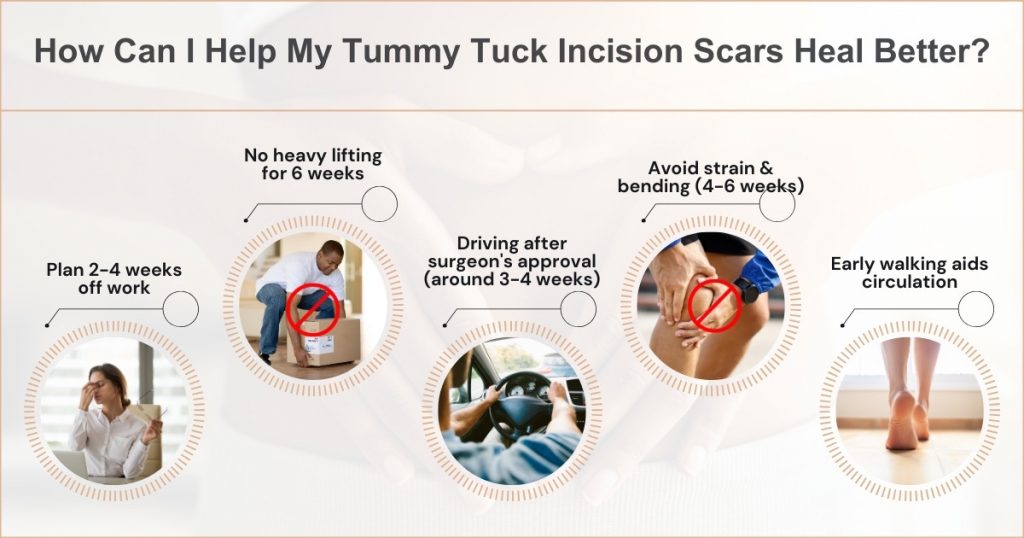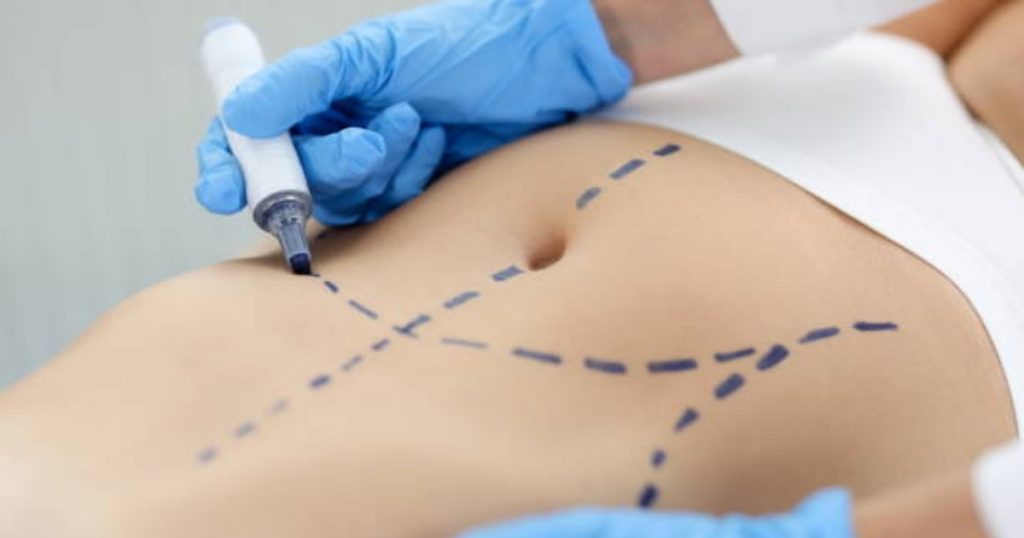Excess skin and fat around the midsection can cause discomfort as individuals age. A tummy tuck , sometimes called abdominoplasty, removes this extra tissue and tightens muscles for a smoother, firmer stomach. However, additional factors around the surgery must be addressed for older patients.
Let’s look at crucial considerations for tummy tuck in the elderly. Topics covered in this article will range from surgical risks at advanced ages and typical recovery periods to expected costs and how to prepare properly before the procedure. With careful planning and reasonable expectations, men and women over 60 can successfully achieve the rejuvenated abdominal contour they desire from a tummy tuck.
Tummy Tuck in the Elderly: Is it Safe?
A tummy tuck is generally safe for older patients, but risks increase with age and existing health conditions.
- Mortality rates for patients over 55 are 0.38% compared to 0.12% for younger patients.
- Older skin has less elasticity, increasing the risk of poor wound healing.
- Risks like infection, bleeding, and DVT are higher for seniors
- Surgeons may require cardiac, pulmonary, or lab tests before surgery
- Stop smoking and get other conditions under optimal control beforehand
- Careful patient selection using assessment tools can reduce risks
- Discuss health history openly with your surgeon before the procedure
Tummy Tuck in the Elderly: What to Expect
Knowing what to expect can help seniors physically and emotionally prepare for a tummy tuck procedure and recovery.
| Phase | Duration | Instructions |
| Initial Recovery | 1-2 weeks | Restrictions on bending, straining, driving |
| Transition Period | 2-4 weeks | Gradually increase activity, short walks |
| Removal of Stitches | 3 weeks | Monitor wound healing progress |
| Compression Garment Use | 6+ weeks | Helps control swelling and support tissues |
| Final Results Visible | 2-3 months | Once residual swelling fully resolves |
| Scar Fading | 12+ months | Use sun protection, topical treatments |
The table summarises the extended timeline elderly patients can anticipate after a tummy tuck, outlining recovery phases along with guidance for activity levels, follow-up appointments, use of compression garments, and approaches to help fade scarring.
Book A Consultation With Dr Shehzadi Tasneem
Top-rated Plastic Surgeon For Tummy Tuck in Dubai
Installment Plan Available
How Long is Recovery Time After a Tummy Tuck for Seniors?

Healing after a tummy tuck may be longer than average for seniors after a tummy tuck procedure due to decreased skin elasticity and slower healing.
- Plan for 2-4 weeks off work depending on job responsibilities
- Swelling may persist for 2-3 months before the final results are visible
- No heavy lifting for a minimum of 6 weeks post-surgery
- Drive only after approval from the surgeon, around 3-4 weeks typically
- Avoid straining, bending, or exercises for 4-6 weeks
- Walking early promotes circulation and lowers risks
- The frame to resume normal activities varies by individual
What is the Ideal Age to Get an Abdominoplasty?

While there is no specific age requirement, the best candidates for a tummy tuck are patients in overall good health, typically between 30 and 60 years old.
- The procedure aims to restore a firmer, flatter abdomen as with youth
- The skin has greater elasticity for optimal results before age 65
- Ability to fully recover critically over the late 60’s
- Child-bearing complete, maintain stable weight
- Nonsmokers experience fewer complications
- During the Middle Ages, the ideal balance of skin laxity and health
- Assess skin tone, muscle condition, fat deposits
- Discuss goals and expectations openly with your surgeon
Are There Alternatives Besides Surgery for Older Adults?
For seniors concerned about surgical risks, alternative options to achieve a firmer midsection include exercise, skin-firming treatments, or non-invasive fat reduction.
| Method | Mechanism | Pros vs Surgery | Cons vs Surgery |
| Diet and Exercise | Reduces fat | Non-invasive | Less skin tightening |
| Skin Firming Devices | Heats collagen | Non-surgical | Temporary effects |
| Fat Reduction Treatments | Cryolipolysis | Minimal downtime | Less dramatic change |
| Skin Firming Creams | Hydrating ingredients | Easily accessible | Marginal results |
Major non-surgical options are compared, highlighting mechanisms, benefits, and downsides compared to surgical abdominoplasty.
How Can I Prepare for a Tummy Tuck at an Older Age?
Proper preparation before a tummy tuck for older patients can facilitate recovery and reduce surgical risks by optimising health conditions, arranging aftercare help, and following pre-op guidelines. The Abdominoplasty Necessity Guide is a helpful book that tells you when you might need a tummy tuck surgery. It’s like a map that shows you the right time and reasons for this operation.
The Superior Stomach Flattening Procedure is a special method used by doctors to make your belly look flat and slim. It’s like a magic trick to help you get rid of extra tummy fat! Tummy Tuck Swelling Reduction helps your tummy feel less puffy after surgery by using special methods to make the swelling go away faster
Tummy tuck local procedure is a surgery to remove extra skin and fat from the belly area while you are awake but the area is numbed so you don’t feel pain Abdominoplasty incision techniques Doctors make special cuts on the tummy to remove extra skin and fat during a tummy tuck surgery These cuts are carefully planned to hide scars and give the best results
Stomach surgery soreness After Evaluating tummy tuck involves checking how well the surgery worked and if the patient is happy with the results It also includes looking at any problems that might have happened after the surgery
Tummy tuck aftereffects can include swelling and discomfort in the stomach area Patients may need to take it easy and avoid strenuous activities for several weeks after the surgery Asymmetrical belly shape means one side of your tummy looks different from the other side This can happen due to various reasons like uneven muscle growth or how your organs are positioned
- Get medical conditions like diabetes and heart disease under control
- Discontinue blood thinning medications like aspirin per surgeon’s direction
- Stop smoking a minimum 6 weeks before to allow tissue to heal post-surgery
- Set up assistance from family or nurses during the initial 2 weeks
- Complete all required lab tests and evaluations before the procedure
- Follow instructions on fasting, medication changes, compression garments
- Ensure the home environment is cleared of fall hazards and tripping dangers
- Have extra pillows, ice packs, and loose, comfortable clothing on hand
What Questions Should I Ask My Plastic Surgeon?

Essential questions for those over 65 to ask during tummy tuck consultations relate to surgical approach, risks, experience with older patients, and projected outcomes.
- How will my age and health be addressed in planning surgery?
- Do you use any assessment tools to screen seniors for surgery?
- What is your complication rate, specifically among older patients?
- Have you successfully treated patients my age seeking this procedure?
- Should I have a medical clearance from my family doctor before surgery?
- What final results can I realistically expect?
- Will there be visible scarring, and how long will it take until fully healed?
Tummy Tuck in the Elderly proves to be a safe and effective option when performed carefully considering the individual’s health and specific needs. This procedure offers the elderly enhanced confidence and improved quality of life.
Interested to learn if a tummy tuck is right for you? Book a consultation with board-certified plastic surgeon Dr. Shehzadi Tasneem Sultan . You’ll discuss your goals, medical history, and available options during your appointment.
Dr Shehzadi Tasneem Sultan is a prominent plastic surgeon specialising in body contouring procedures like tummy tucks. She received robust training in plastic and reconstructive surgery techniques, including a prestigious fellowship with the British Association of Plastic, Reconstructive, and Aesthetic Surgeons. With over a decade of experience, Dr. Sultan provides exceptional patient care using an artistic eye to achieve natural-looking outcomes to boost self-confidence.












